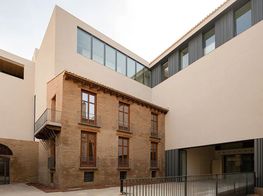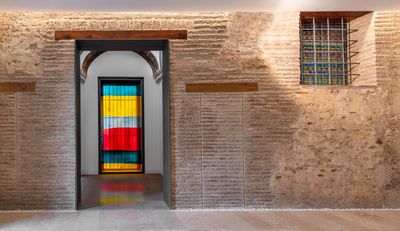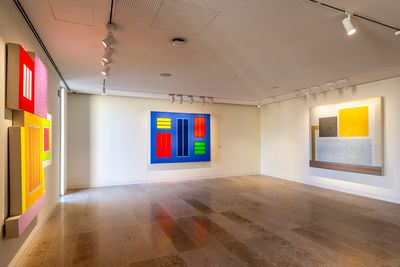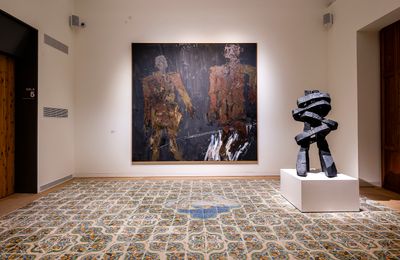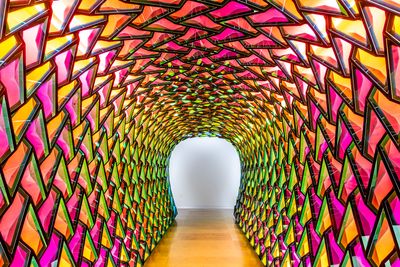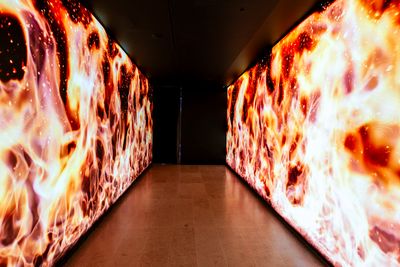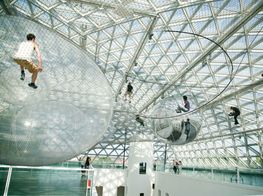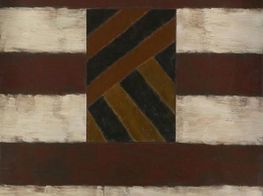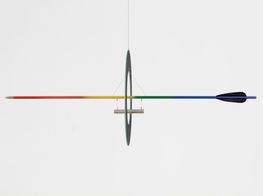Hortensia Herrero Art Centre Opens in Valencia
After five years restoring its palatial building, Spanish billionaire Hortensia Herrero's art centre has opened its doors. What will the private collection mean to the public?
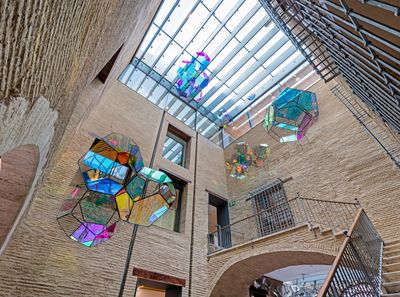
Tomás Saraceno, Corona Australis 38.89 (2023). Exhibition view: Hortensia Herrero Art Centre, Valencia (2023). Courtesy Hortensia Herrero Art Centre. Photo: Adolfo Benetó.
The Hortensia Herrero Art Centre was unveiled in a closed ceremony in Valencia last week. It includes over 100 artworks by brand-name artists and six site-specific commissions spread around four floors, 17 exhibition rooms, and a garden courtyard of the former Valeriola Palace.
The Baroque building was once the domicile of Don Joan de Valeriola, a descendent of Valencia's most important 14th-century banker. Its acquisition by one of Spain's wealthiest families, who excavated and reconstructed the building at a cost of €40 million, is a win for architecture. It's less clear what it means for fans of contemporary art.
Blue-chip artists such as Anselm Kiefer, Georg Baselitz, and Anish Kapoor have been selected for the collection with the help of Spanish art advisor Javier Molins.
Speaking to Herrero's intent to 'increase sensitivity for contemporary art among the society', tickets are priced to engage a wide audience, costing just €9. That's made possible by the fact that the Art Centre hardly needs to turn a profit.
Herrero, with her husband Juan Roig, made her fortune as majority shareholder of Mercadona, the grocery conglomerate they took over with Roig's brother Fernando in 1981 and have since expanded to more than 1,600 stores, with a projected €30 billion revenue in 2023. Her own philanthropic projects have centred on architectural restoration and promoting the fine arts in Valencia, where she was born and lives.
Around a fifth of the collection was acquired from local galleries, and nearly half of the artists are from Spain, including Miquel Barceló, Blanca Muñoz, and Julio González. A selection of works by Spaniards are shown on the ground floor, which the Art Centre plans to rotate over the year.
Sensible if expensive tastes in art are augmented by the building and its history. The first sitting room, for instance—which once housed two lions used in circus performances, according to Molins—now features three monumental Kiefers followed by two darker Baselitzs, a painting and sculpture.
Ornate ceramic floor tiles draw attention away from the artwork, as do many architectural details preserved throughout the palace, such as an excavated stone furnace nestled between two bathrooms in the basement, ruins from the Roman circuit, an Islamic fountain, and remains of the Jewish quarter.
Exuberant commissions were also made to complement these architectural features. Sean Scully's stained-glass windows and striped canvas, for instance, are displayed in a chapel with ceiling frescos, Olafur Eliasson's iridescent glass tunnel lines a corridor, and Tomás Saraceno's monumental glass orbs hang above the staircase in the foyer.
An atmospheric pink surface by Ann Veronica Janssens fits in nicely, as do Eliasson's light projections and Kapoor's geometric mirrors. Hockney's nine-screen video landscapes and Peter Halley's cell paintings replicate the grid of the stone floors. Rashid Johnson's oak canvas, marked by carvings and black symbols, however, hangs like an afterthought.
Among the works on view, teamLab's interactive animation The World of Irreversible Change (2022) is perhaps the biggest outlier. On a six-screen monitor depicting what looks like a traditional ink painting of a village scene, animated people carry on with their lives as days turn into night and the seasons change in real time. By touching the screens, visitors can incite fights between the villagers that lead to a war that sees the village burn down. If that happens, the foliage will recover, but the people will never return.
Molins suggests visitors will be dissuaded from over-engaging with the landscape to keep the peace. The allusion to the possibility of destruction is sufficient to align under artistic intent, while the poetics in question—of the ephemeral nature of an irreversible landscape—is actively avoided to preserve the artwork.
The remark speaks to the ethos of a private collection made available as an art museum to the public. The Art Centre, which has no plans to show work from outside the collection, promotes an understanding of art as collectible objects tastefully displayed.
Will visitors want to get acquainted with works by art market darlings—especially as the free Museum of Fine Arts of Valencia, with a room dedicated to Goya and work by Velázquez, El Greco, and Sorolla is a ten-minute walk away? Perhaps for the pretty interactions between art and architecture. —[O]

